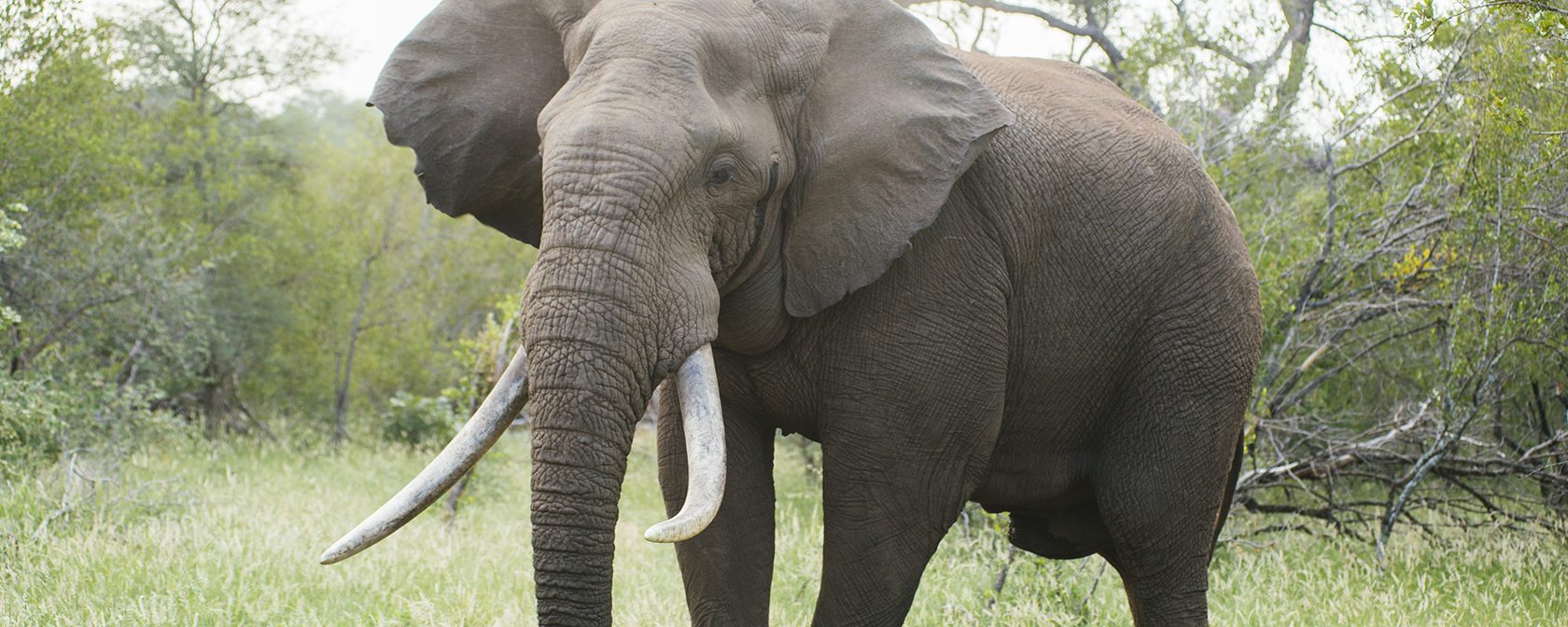By Sara Amundson and Kitty Block
We learned last week about the outrageous killing of two iconic and rare “big tusker” male savanna elephants in an unpopulated corner of northern Botswana. “Big tusker” refers to an elephant with at least one tusk weighing 100 pounds but it effectively signifies an elephant who has survived for more than 50 years and whose knowledge and experience is irreplaceable to his herd.
There are only a few dozen “big tuskers” left in Africa. The largest of the two elephants slain had tusks weighing around 100 pounds each, almost 8 feet in length, and was estimated to be in his early 50s. With an average longevity of 65 years, and older bulls fathering most calves, a bull like this is still in his prime.
It is these imposing tusks that make such elephants targets for trophy hunters, who favor rare animals with striking visual features and those who may be riskier to hunt because it makes killing them a bigger thrill with bigger bragging rights. How can we as a global community still allow the wanton slaughter of emotionally complex, intelligent and rare animals simply for the chance to boast about killing them?
While campaigning for election, President Joe Biden said he would prohibit endangered animals from being hunted and brought into this country for trophies—“trophies” being the bodies and body parts of killed animals. And yet in March of this year, against our protests, the U.S. Fish and Wildlife Service authorized new elephant trophy import permits. Right now, it’s easier than ever for American trophy hunters to kill these majestic animals abroad and bring their parts into the country. For that reason, we are now urging the administration to stop authorizing the import of trophies from threatened and endangered species into the United States. And we’re asking you to press your federal officials to support reintroduction of the Prohibiting Threatened and Endangered Creature Trophies (ProTECT) Act, which will prohibit the import of any trophy of a species listed under the Endangered Species Act into the United States and trophy hunting within the United States of any ESA-listed species.
The U.S. is the world’s largest importer of hunting trophies, by a sizeable margin. The savanna elephant is listed as “threatened” under the Endangered Species Act and the animal’s trophies require a permit from the U.S. Fish and Wildlife Service to be imported. Before issuing an import permit, the agency must first formally determine that the import will enhance the survival of the species in the wild.
It is obvious that these trophy kills will not enhance elephant survival. The two elephants served an important ecological and educational role in their societies. Older bull elephants are critical in elephant societies and herd and bull hierarchy because they keep younger bulls in check, discouraging them from delinquent behavior that can lead to human-elephant conflict and aggression against humans and other species. A study conducted last year by scientists from the University of Exeter found that as the number of mature bulls present increased, younger male aggression decreased, indicating that older males appear to play a role in keeping younger, less experienced males calmer in the face of perceived threats.
Elephants like these also generate critical revenue for Botswana communities and have done so for years by drawing in wildlife viewing tourism. The trophy hunters who killed these two elephants have not only robbed two magnificent animals of their lives and elephant herds of stability. They have deprived the local community of earning future tourism dollars, since tourists from around the world travel to Africa for the unforgettable experience of seeing elephants like these roaming freely in the wild. Estimates suggest that living elephants are each worth $1.6 million in tourism revenue over their lifetimes. The trophy hunter who killed the larger of the two bull elephants in Botswana reportedly paid $50,000 to kill him.
Botswana re-opened trophy hunting across the country in 2019 after the previous president—Ian Khama—outlawed it in 2014 citing declining wildlife numbers. Khama was outraged by the death of these two elephants and asked: “How does [the elephant] being dead benefit our declining tourism [industry]?”
The African savanna elephant is a threatened species whose population has declined by at least 60% over the past 50 years. The main threat to these animals is poaching for the illegal ivory trade. Ivory poachers have already killed many of the big tuskers, and now trophy hunters are after the rest. Is this the kind of world we want our children to inherit? A world in which the largest land mammals have been wiped out because governments did little or nothing as a small pool of short-sighted thrill seekers shot down one elephant after another after another?
Learning about the death of these two elephants brought back memories of Cecil, the lion killed by an American trophy hunter in 2015. Cecil’s death rightfully caused a global outcry against the pointless, destructive horrors of trophy hunting. We must keep up that pressure and consistently show our elected officials, and those involved in the trophy hunting industry, that we will not allow the selfish whims of a few to rob future generations of these fascinating animals or to rob these complex, sensitive beings of their very lives.
Urge your legislators to reintroduce the ProTECT Act to help put an END to trophy hunting >>
Kitty Block is President and CEO of the Humane Society of the United States.




